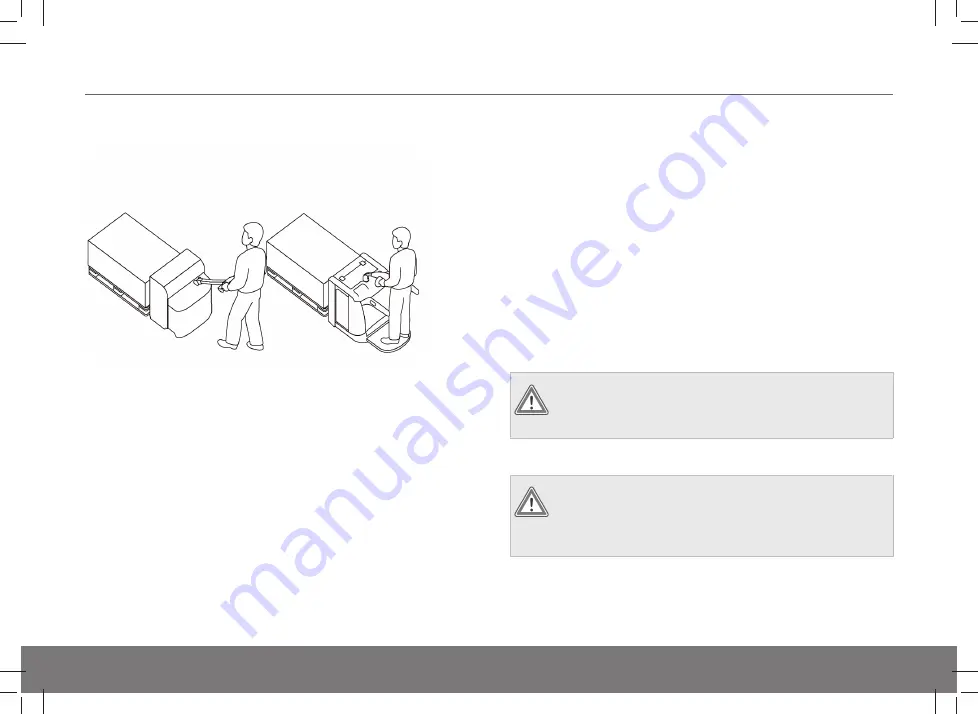
15 SAFETY REGULATIONS
62
Transports
Figure 9. Transport mode
In normal operation, the truck's transport mode must be
observed. It is prohibited to drive with forks raised when moving
loads up and down in shelves and similar.
When transporting loads, the truck should, if possible, be driven
in the opposite direction to the direction the forks are pointing.
This ensures that the operator has a better view if the load is
high, and makes the truck easier to manoeuvre. When driving in
the direction of the forks, the truck is sensitive to any sharp
steering movements (compare with reversing a car). Only drive
the truck with covers and housings closed and locked in place.
Speed
Adjust the speed according to the floor conditions, the line of
sight and operational safety. Avoid rapid acceleration, sudden
braking and cornering at speed; there is a risk for overturning or
that the load will fall off.
Driving space
Ensure that you have sufficient space for the truck - both the
driver and the load - in narrow aisles. Narrow door openings
that will not permit two-way traffic must be entered through the
centre of the opening. Remember that the truck platform, gates
and overhead guard require extra room. Follow the truck paths
marked within the driving area. Remember to keep your whole
body inside the truck perimeter to avoid crushing injuries.
WARNING!
It is not permitted to push material that is on the floor
out of the way by means of the truck's chassis.
Powered trucks equipped with folding platform
WARNING!
Take great care when guiding a pedestrian truck with
a platform, as there is a risk of being crushed
between the truck and surrounding objects.
Instruction Handbook PLL, PLE, PSL, PSD, PS, PSH, PLP, TS — D002652, B, GBR, ForTranslation










































